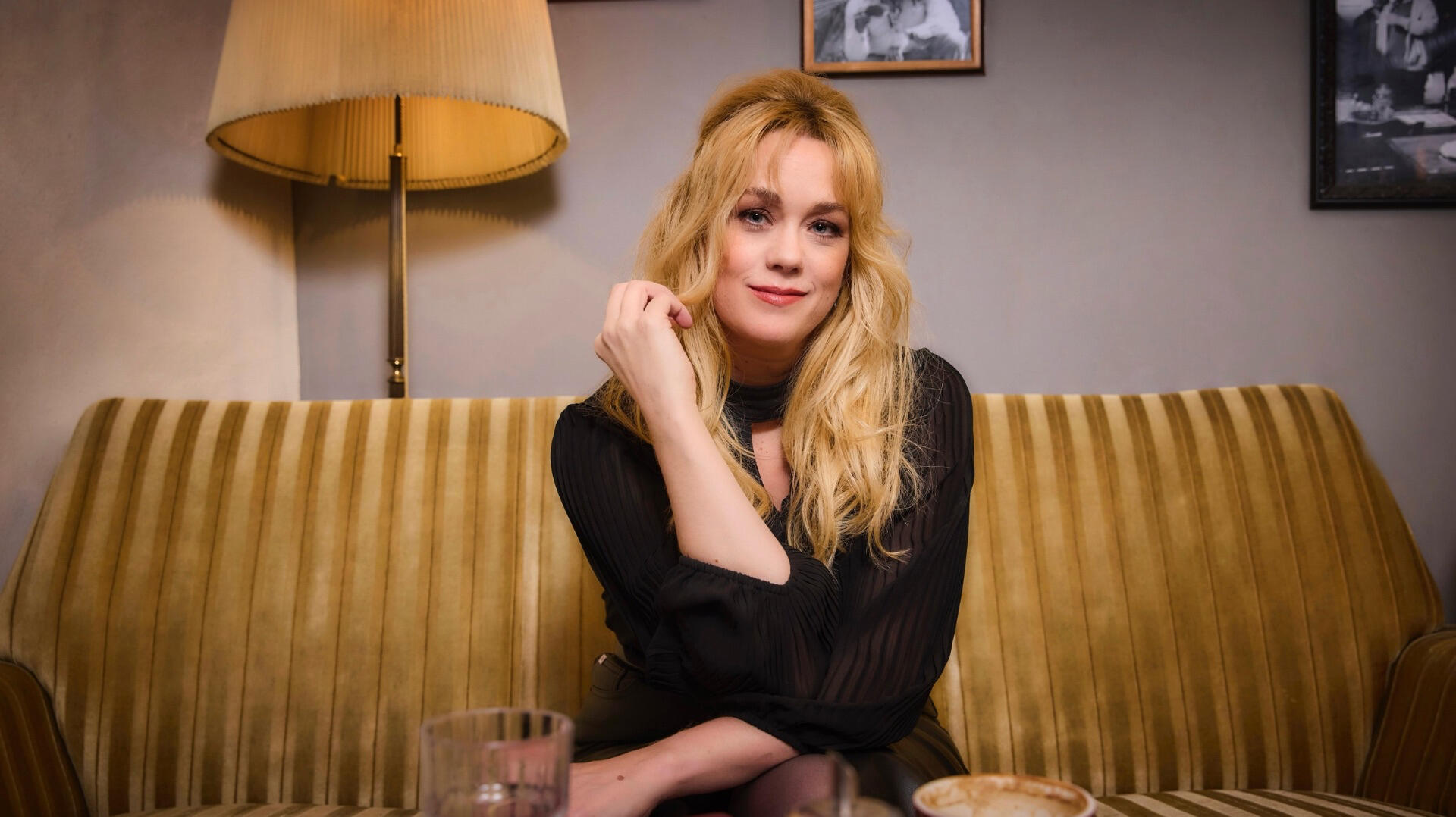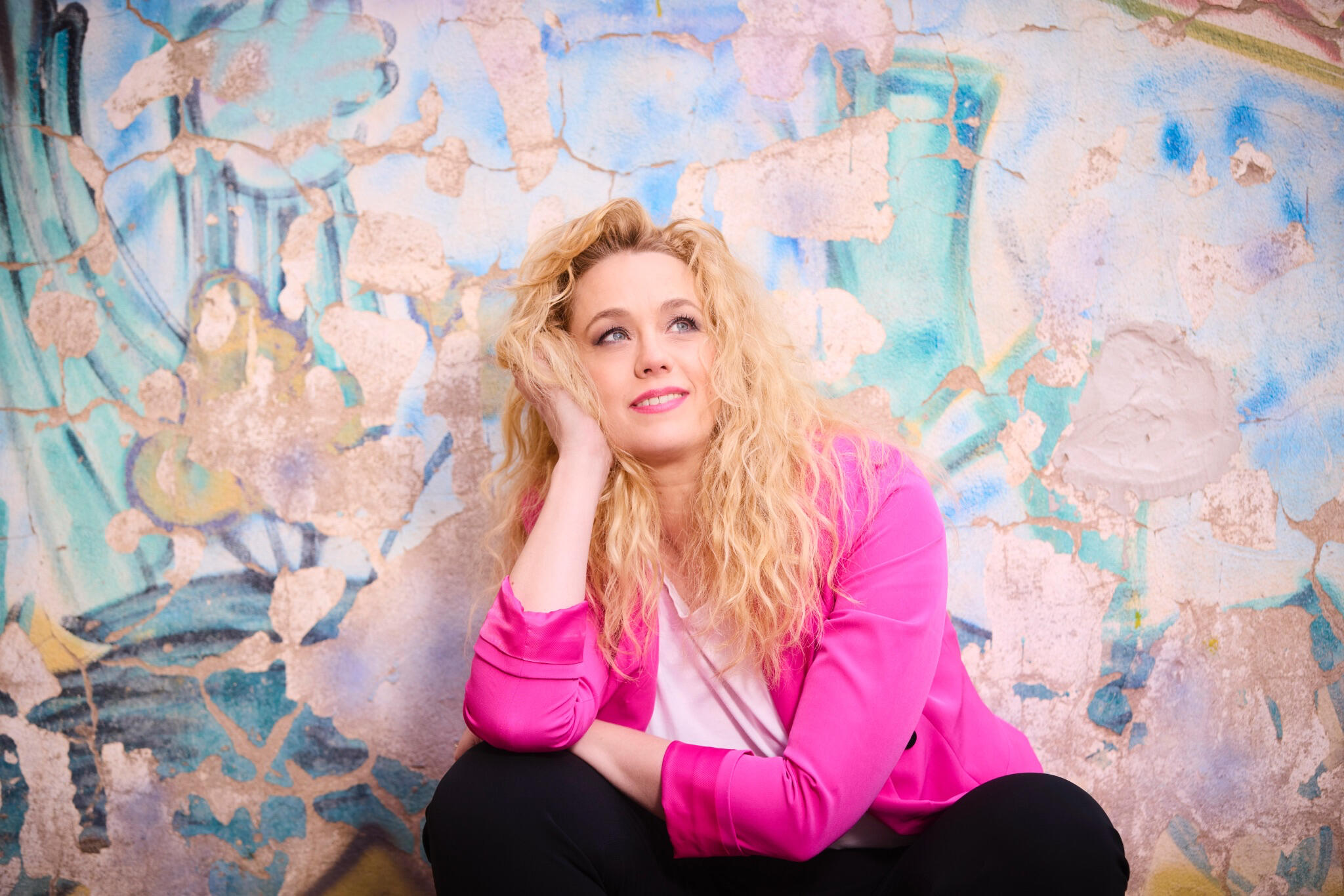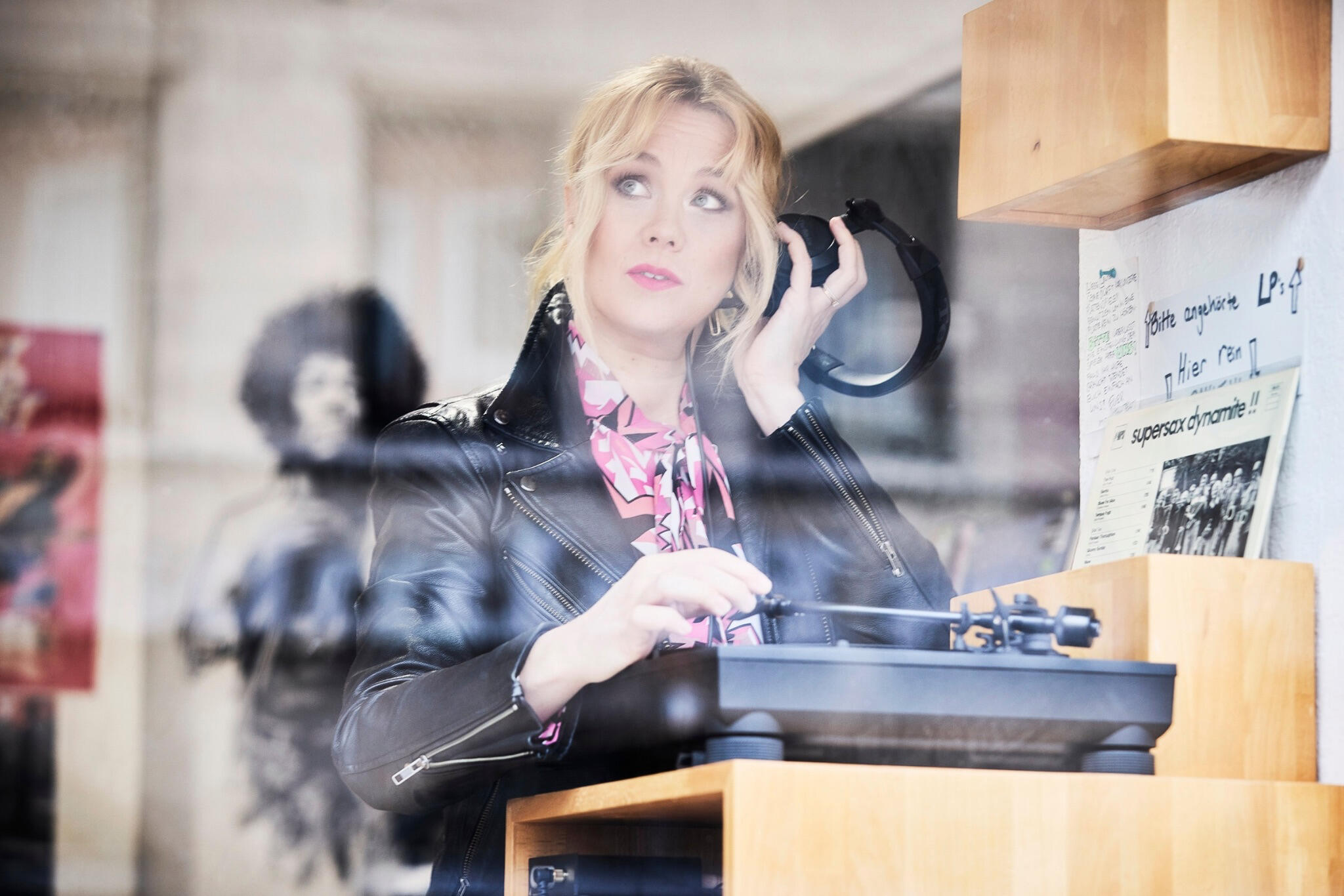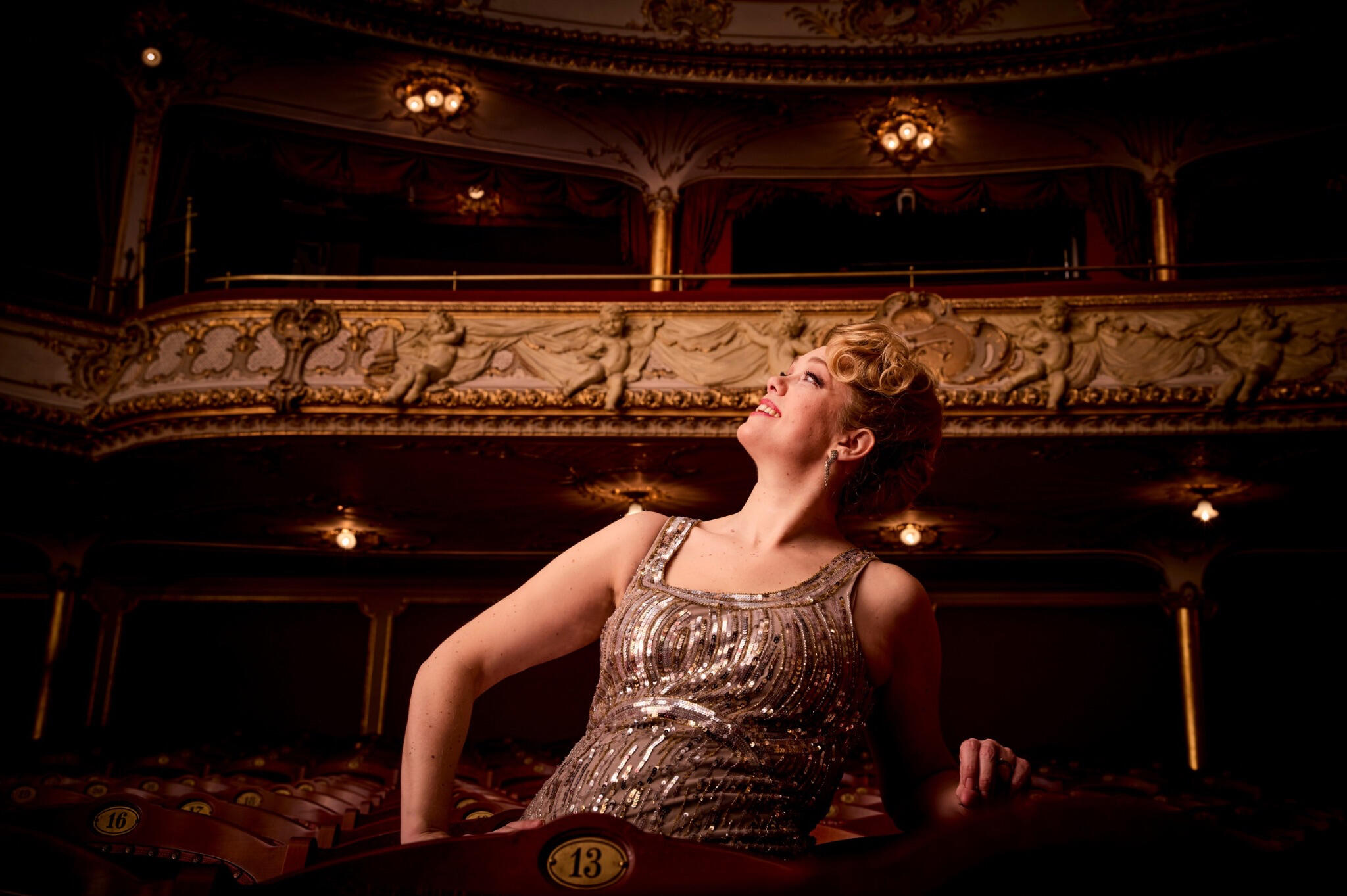
Leah Gordon - That Leah
If you’re wondering about the name — That Leah started as a cheeky answer to the question: Which Leah Gordon is she?
The answer: that one — the one who isn’t a famous photographer, but who has sung for world leaders, in Roman limestone quarries, in parking garages, and once on horseback. Her voice spans four octaves, her projects cross centuries, and her rulebook went into the shredder years ago.
Leah Gordon doesn’t listen to genres — she listens to music that meets her own exacting aesthetic, wherever it lives. Her playlists effortlessly cross from the indie intimacy of Madison Cunningham, MUNYA, and Girl Ray to the lush cinematic worlds of Sven Wunder and Ólafur Arnalds, the groove-minded precision of Vulfpeck and Jungle, the smoky elegance of Georgia Cécile and Σtella, and the dreamy retro shimmer of L’Impératrice, Vaughn, and Astrocolor. She gravitates toward artists who share a certain DNA: depth over volume, intimacy over spectacle, and a mastery of tone, texture, and atmosphere. This sensibility is the through-line in her own work, whether she’s crafting concept-driven arrangements, delivering a searing Italian heroine, or reshaping pop songs through her lens of emotional precision and authenticity. For her, opera is the challenge of extreme mountain climbing, not an alpine refuge— her pleasure listening is reserved for music that feeds her need for sensitivity through a sense of colour, shape, and storytelling, regardless of category.She grew up in rural Ontario, where the church choir and community theatre were her first stages — until she got banished to the back for being “too loud.” Hardly surprising: what else do you do with a 13-year-old future Tosca still fuming that she wasn’t cast as Dorothy in The Wizard of Oz? At her performing arts high school, she was soon music-directing an original school musical and conducting the pit band like a glitter-eyelinered miniature dictator. By sixteen, she had already won the Grand Prize on the nationally televised Homegrown Café, dazzling the judges with Andrew Lloyd Webber and a sparkling “Poor Wand’ring One” from The Pirates of Penzance — an early masterclass in how to leave a panel deliciously confused.

She has the kind of range that makes people do a double take — Eb2 in the bass range up to the Eb6 above high C. That’s four full octaves if you count like an expert (she does), which means she can rumble like a contralto and still toss off coloratura fireworks without even changing shoes. This is part of why she’s not just “versatile” in the vague way singers claim — she’s actually excellent across wildly different styles. Her wheelhouse runs from the raw clarity of early music to Verismo queens, fin-de-siècle decadence, and the smoky crosscurrents of 1930s film scores and jazz.She crashed into Europe at age 24 as La Folie in Rameau’s Platée — think sequins, madness, and baroque chaos — and somehow walked away with the Theater Prize for Best Performance of the Season. She started winning competitions when she was only 13 and didn’t stop until she quit competing around 25 years later picking up everything from Kiwanis Silver Trays to Canada Council grants, Italian public prizes, and later the Elisabeth Connell Dramatic Soprano Prize. She’s racked up about 90 operatic roles in a ridiculous spread of houses from the Glyndebourne Opera Festival, Royal Opera de Wallonie, and Vlaamse Opera to Theater Basel, Nationaltheater Mannheim, and the vast open-air stage at St. Margarethen. She did a decade at Staatstheater Nürnberg, popped up in Modena to scream her face off as Turandot, and sang Erste Dame while covering Anja Harteros in Tannhäuser at the Bayerische Staatsoper without combusting. She’s recorded Verdi's early operas Attila and Ernani, tackled both the French and Italian Don Carlo(s), reigned as Aida, Ballo's Amelia and Otello's Desdemona, stormed through Puccini’s Trittico (both Giorgetta and Suor Angelica), and torn into Santuzza— all while sneaking in deep cuts nobody else touches: Mercadante’s Zaïra, Donizetti’s Emilia di Liverpool, Halévy’s La Juive, Mathilde in Rossini’s Guillaume Tell, and Meyerbeer’s towering monsters, L’Africaine and Les Huguenots.

Her concert life reads like a dare list: Orff’s Carmina Burana (the original boss-battle soundtrack), Berio’s Folk Songs (one moment a floating Baïlèro from Auvergne, and the next an Azerbaijani song delivered with unbridled force), Mahler’s Auferstehung broadcast live to the nation, and Tippett’s A Child of Our Time — all while sneaking in Vier letzte Lieder for Deutsche Radio Philharmonie because why not. She’s belted Broadway with the Stuttgarter Philharmoniker, sung to 60,000 at Nürnberg’s Classic Open Air, and fronted the Arena di Verona Orchestra for the G7 Summit Gala. The chaos file is just as rich: a full Bond Girl feature at an open-air, a lighting-booth Bohème during a parcours performance, impersonating ABBA and Alanis Morissette on German TV, dropping Musetta’s Waltz into a nightclub electronica set, improvising world premieres with a rubber ducky (don’t ask), pole-dancing in a musical, and flooring moguls at Mercedes’ new glass palace with her infamous ‘Girl in 14G.’ She’s worked with rock bands in the studio, sung with combos and big bands, and performed everywhere from Ottawa’s Château Laurier to a real prison while filming Fidelio.

Leah has a habit of curating her own conceptual projects — designing mash-ups, and pairing things that “shouldn’t” go together until they suddenly do. She’s reimagined Dowland next to the Great American Songbook, co-arranged Puccini for jazz trio, built full programs on Kurt Weill and Lotte Lenya’s marriage, and created a music video of Poulenc's "Hotel". She’s sung Appalachian folk songs, spirituals, Gershwin, Porter, Bolcom, Bucchino, Sondheim, Berg, and Britten — sometimes all in the same program.If there’s a common thread, it’s this: Leah Gordon refuses to live inside anyone else’s box. She’s been publicly described by conductor Marcus Bosch as a chameleon in the truest sense — equally at home on a grand opera stage, in a smoky club, or on a festival field — but wherever she is, she’s unmistakably herself. Coming up, she’s deep in two passion projects: "Fluid Jazz", a shape-shifting mix of jazz, film, and classical, designed to collapse genre walls in real time; and her Irving Berlin program, imagined as a live album to capture Berlin’s wit and romance for voice and grand piano in a way that makes it feel like you’re eavesdropping on two friends in conversation. Both are built on her favourite kind of alchemy — giving every style the space to be fully itself, while letting her voice make the connections.
